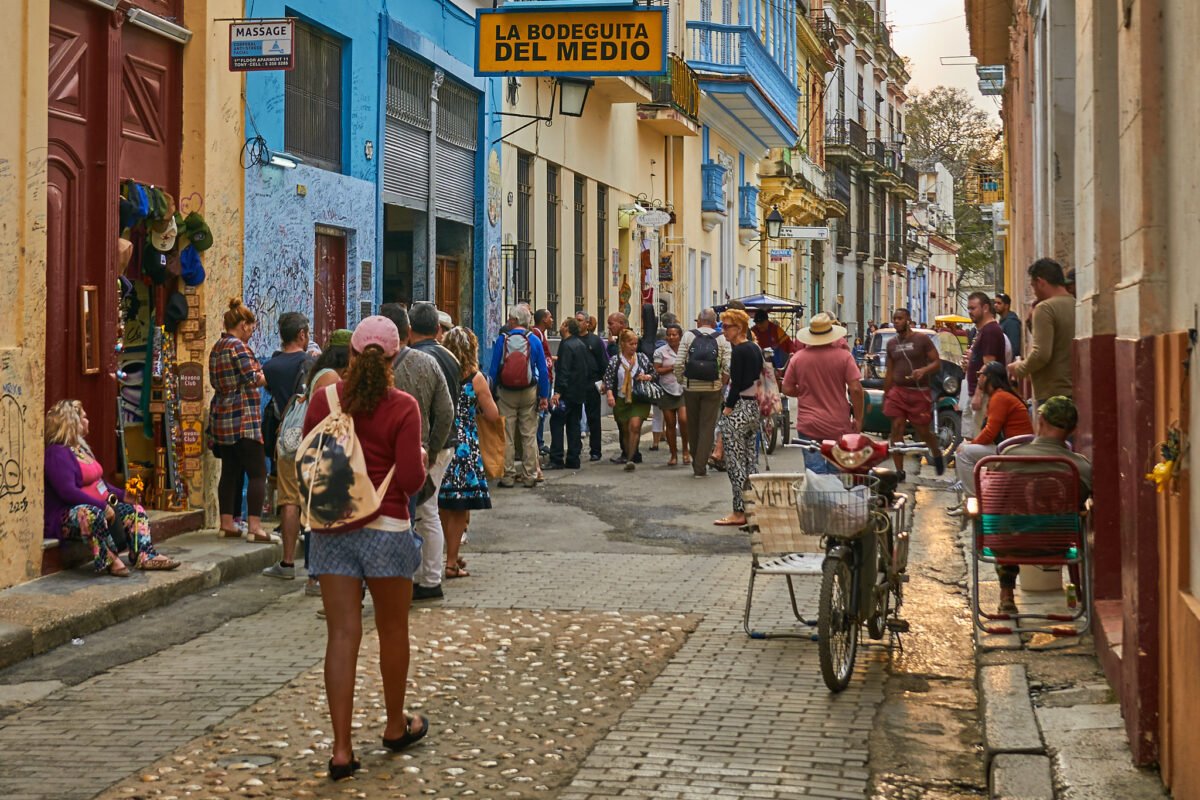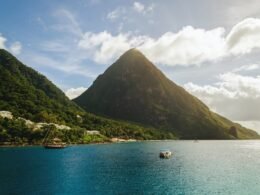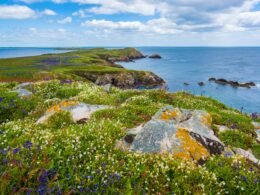Cuba is a unique country not yet invested in modern consumerism, instead, you’ll find vintage radios, cobblestoned streets, classic cars, and neon signs over storefronts. It’s no wonder why visitors flock to the island, as it gives an experience of stepping back in time.
If you know Cuba you’ll have heard of Havana, the island’s state capital, but there’s more to see and do across Cuba’s other great locations which will be explored in this guide. We’ll take you through where to stay in Cuba for city exploration, beach paradises, or adventurer escapes.

For city exploring and the nightlife: visit Havana
The capital city of Havana is split into several municipalities, each neighbourhood offers different personalities of the Cuban culture. Two of the most popular neighbourhoods for visitors are Old Havana and Vedado, offering beautiful city scenery in lively areas with lots of things to do and see for all visitors.
If you’re into city exploring: Old Havana boasts picturesque original architecture, from colonial landmarks to churches and fortresses. This is the most popular neighbourhood for urban exploring, with lots for visitors to see as they wander the cobblestoned streets and between buildings. It’s recommended to be respectful when walking through the side streets, as the buildings are home to Cubans living in the city.
If you’re into the nightlife: Vedado is the place to be, as the neighbourhood is home to the rich and famous, with beautiful mansions scattered around. Where the rich residents live, they also like to party, and Vedado hosts tons of restaurants, bars and clubs, which come alive by the evening. It’s the popular place to be if you’re looking for Cuban nightlife!

For relaxing on the beach: visit Jibacoa or Varadero
One mid-range beach resort and one upper-market resort, both Jibacoa and Varadero offer seclusion away from the hustle and bustle of the capital city, with sweeping beaches and stunning landscapes.
Jibacoa, which is also known as Play Amarillo, is on the North coast and around one hours drive (60km) from Havana. Lined by the beach and hills, Jibacoa is the location if you’re looking for a quiet location with tranquillity on a mid-range budget. Only 12km away is a small fishing village called Santa Cruz del Norte, which is home to one of the largest Havana Rum factories on the whole of Cuba.
Varadero is the premier beach resort, located two hours’ drive from Havana. If you’re looking for all-inclusive hotels and white sandy beaches, this is the place to stay. While there isn’t much authentic cultural experiences, its draw is for visitors who want to relax, enjoy the sun, lay on the beach and dip their toes in the warm Atlantic Ocean.

For scuba diving and snorkeling: visit Cayo Levisa
Cayo Levisa is a very tiny island, 6km off the North coast of Cuba’s Pinar del Rio Province which is a three-hour drive from Havana (140km east). On the south side of the island is a mangrove forest, and on the north side of the island is a 3km white sandy beach.
It’s known as an excellent location to snorkel or scuba dive due to the idyllic location and crystal clear waters, and the only hotel on the island has its own in-house fully equipped diving centre. Being so remote, it’s a very quiet place and there are no residents on the island, the only people are the staff who work at the hotel/dive centre, and hotel visitors.
Important to note… as it’s an island, the only way to reach Cayo Levisa is by ferry. There are only two ferry services to the island, and two ferry services back to mainland Cuba (morning and late afternoon). Be sure to check the times at the boarding dock, and the fare needs to be paid for in local cash upon boarding the ferry.

For heritage sites and nature… visit Maria La Gorda
Located on the western tip of Cuba, a five-hour drive from Havana, Hotel Maria La Gorda is located in the remote Guanahacabibes Peninsula. The hotel is within the world heritage listed site, Cabo Corrientes Nature Reserve, surrounded by thick forest for day trekking and a white sandy beach for relaxing.
It’s also another great location for scuba diving, and is tourist friendly with experienced instructors able to converse in English, French, Russian and Italian – it’s a great location for sea exploring if Cayo Levisa is too remote for you.
The heritage site is home to more than 170 species of birds, and dozens of reptiles, mammals, and fish, along with protected coral reefs. Maria La Gorda’s beach is also the second largest breeding location in Cuba for green turtles to use as a nesting ground, with an average of 300 nets per season served by local research and conservation teams.

When’s the best time to visit Cuba in 2023?
Cuba’s summers exceed 40+ degrees Celcius or 104 degrees Fahrenheit, but the island has an all-year hot climate. For manageable temperatures and a little rainfall, the best time to visit is March and April, and for cooler temperatures visit from November – February.
The rainy season starts from mid-end of May, right through to October, as Cuba’s tropical climate means rain showers don’t last long but can happen most days during these months.
In the peak summer months, June – August, the weather is very humid and fast-changing, so it’s best to avoid this time if you struggle with high temperatures and high humidity.
Cuba travel tips:
Cuba’s national currency is the CUP (Convertible Cuban Pesos), but it’s recommended to bring US Dollars, Euros, Canadian Dollars or Great British Pounds along with you, as any CUP left over cannot be converted back to other currencies.
Getting around Cuba is easy depending on the type of holiday you’re looking for, your budget, and your preferred method of transport. Public transport includes the bus and taxis, with buses generally being cheaper but slower, and taxis varying in price between cities and drivers. It’s recommended to research your chosen destinations and how much you should be paying for each trip, to then negotiate with the driver if you’re taking a taxi.














